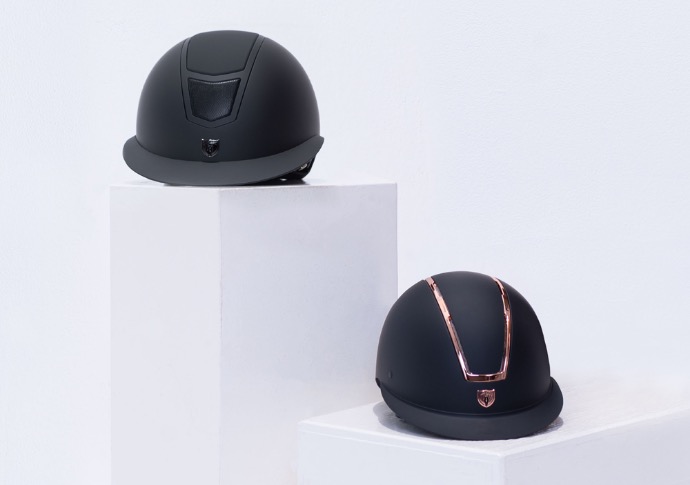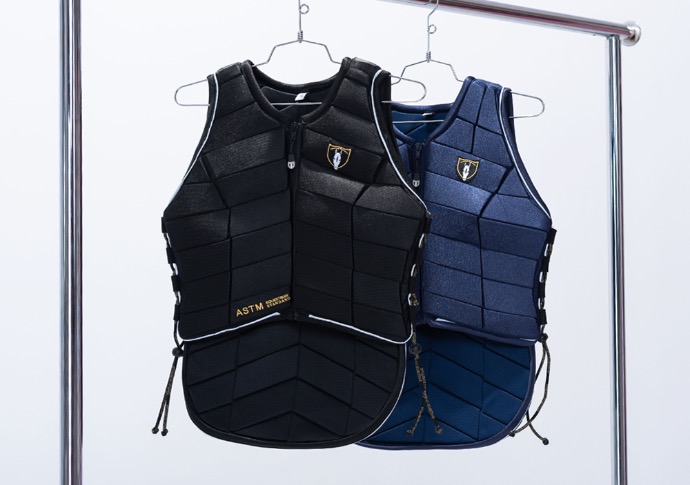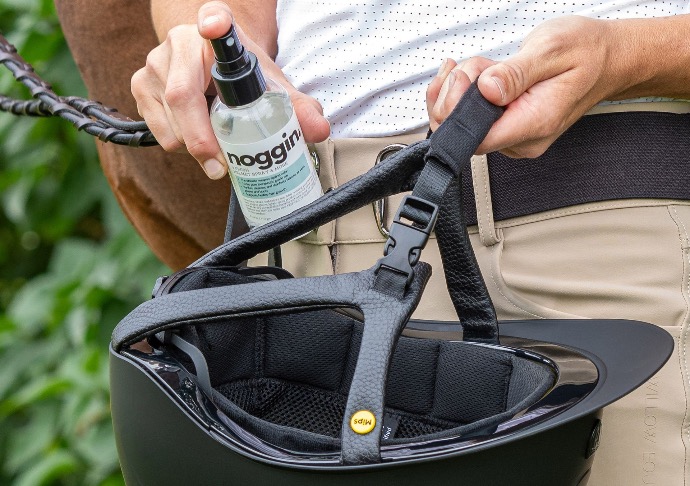Care & Cleaning

Helmets
Help keep your helmet in working condition by following these helmet care guidelines, and be sure to inspect your helmet before each use.
Replacement
Equestrian helmets are designed to be single impact helmets. If your helmet has been involved in a fall, it should be replaced immediately, even if there are no visible signs of damage to the exterior.
Even if your helmet hasn’t been involved in a fall, it is important to note if your helmet has been involved in any other impacts including being dropped onto a hard surface, like the barn floor.
It is recommended that you replace your helmet at least every 5 years, even if it hasn’t been involved in a fall. The 5-year replacement guideline for equestrian helmets begins from the date of purchase, not the date of manufacture. Normal wear and tear, hair spray, cosmetics, exposure to sunlight and heat, certain types of cleaning agents, and sweat are some of the many factors that can contribute to the slow degradation of a helmet, all of which begin to occur from the time the helmet is first worn.
Watch for changes in fit that can be indicated by pressure points, noticeable gaps, or helmet movement/shifting. You may need to replace your helmet and/or helmet liner if you are experiencing any of these changes in fit.
Storage
Do not store your helmet in direct sunlight, or in an area subject to extreme temperatures. (Any area where the temperature could exceed 130°F | 54°C or where it could freeze.) Keep your helmet in a breathable storage bag to protect it from dirt and scratches. Let it dry between uses, keep it clean and keep it out of the sun.
Do not expose or store your helmet, the liner or any of its components near common household cleaners, bug sprays or common cleaning solvents, paints, chemicals or fertilizers as this may result in unseen damage.
Modification
Do not modify your helmet in any way, including drilling/cutting holes, or applying any paint or adhesives (crystals, stickers etc.)
Cleaning
Do not use chemicals to clean your helmet, they can cause damage to the padding, the shell and its protective coatings. Never fully submerge your helmet or clean it in the dishwasher!
Shell: Remove the liner. Use a soft brush or compressed air to clean the air vents. Lightly wash the outer shell with a soft cloth and mild soap, rinse with a clean cloth and clean water to remove any soapy residue.
Liner: Remove the liner. Hand wash with cold water and mild soap, never machine wash or dry clean.

Back & Body Protectors
Help keep your back/body protector in working condition by following these care guidelines, and be sure to inspect your back/ body protector before each use.
Replacement
Inspect your body/back protector regularly for signs of wear or material failure. In the event of a fall or impact, inspect the body/back protector thoroughly for signs of damage.
It is recommended that you replace your back/body protector at least every 5 years, due to exposure to outdoor conditions and wear and tear.
If your vest is too loose or too tight, it should be replaced.
Storage
Do not store your back/body protector in direct sunlight, or in an area subject to extreme temperatures. Store your back/body protector laying flat, or on a hanger.
Cleaning
Body/back protectors may be spot washed with lukewarm water using a mild detergent, and spot rinsed with cold water, and hung to dry.
Never use harsh chemicals to clean your back/body protector. Do not fully submerge your back/body protector, or put in the washer or dyer.
Be sure to check your individual product manual before cleaning your back/body protector as the instructions can vary between products depending on their material and construction.
Closures
Whether your back/body protector had Velcro or zipper closures, make sure the closures/zipper are kept free of lint, dirt, horse hair etc.
Before putting on your back/body protector, make sure all zippers are undone and that all Velcro or lace closure are loosened. If not, this can weaken the zipper and increase the risk of zipper breakage. Failure of the zipper from incorrect adjustment will void the warranty.

Tipperary Equestrian has partnered with The Infused Equestrian to recommend Noggin. A Fresh Helmet Spray & More.
This universal spray is the ultimate defence against odor, and is proven to purify and disinfect riding equipment (vests too!) Noggin spray is approved for use on Tipperary products, including helmets and vests.